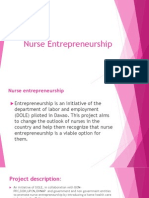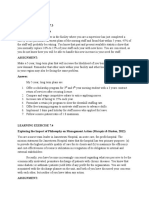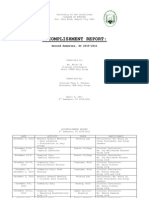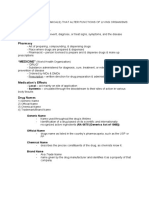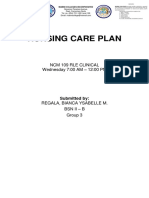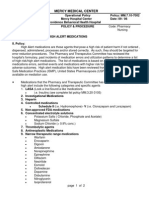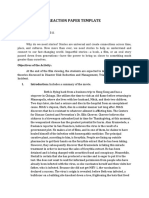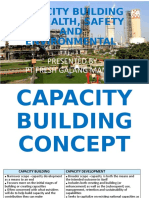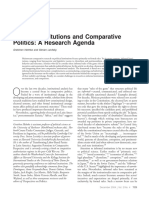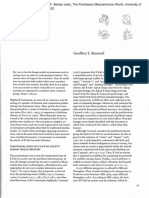0% found this document useful (1 vote)
433 views19 pagesCapacity Development For Disaster Risk Reduction: Niloy Banerjee
The document discusses capacity development for disaster risk reduction. It defines capacity building as having a narrower scope focused on initial stages of creating capacities, while capacity development has a broader scope that includes both creating and enhancing capacities as well as their use, management, and sustainability over the long term. It also notes that capacity development is nationally owned and led, with outside support provided to country-led processes.
Uploaded by
Genut Wahyu WidionoCopyright
© © All Rights Reserved
We take content rights seriously. If you suspect this is your content, claim it here.
Available Formats
Download as PPT, PDF, TXT or read online on Scribd
0% found this document useful (1 vote)
433 views19 pagesCapacity Development For Disaster Risk Reduction: Niloy Banerjee
The document discusses capacity development for disaster risk reduction. It defines capacity building as having a narrower scope focused on initial stages of creating capacities, while capacity development has a broader scope that includes both creating and enhancing capacities as well as their use, management, and sustainability over the long term. It also notes that capacity development is nationally owned and led, with outside support provided to country-led processes.
Uploaded by
Genut Wahyu WidionoCopyright
© © All Rights Reserved
We take content rights seriously. If you suspect this is your content, claim it here.
Available Formats
Download as PPT, PDF, TXT or read online on Scribd
/ 19

